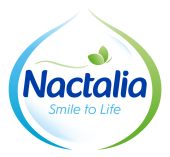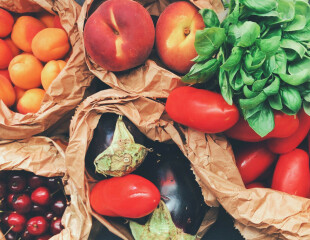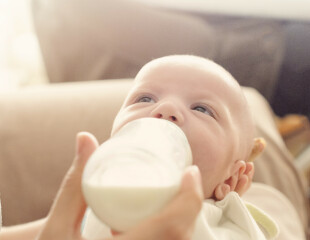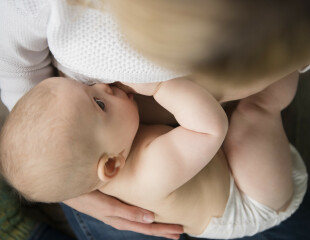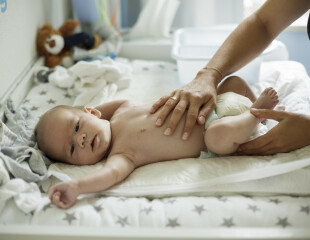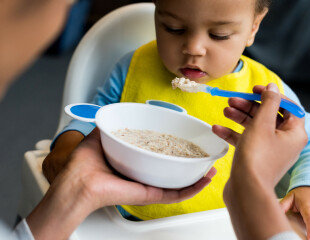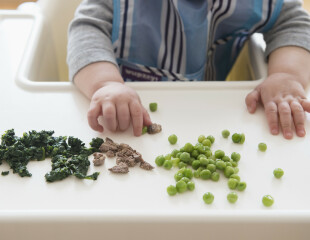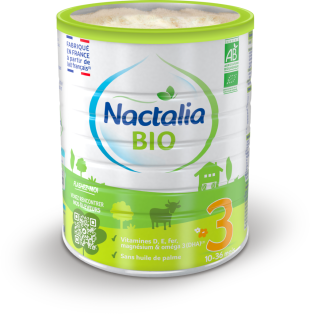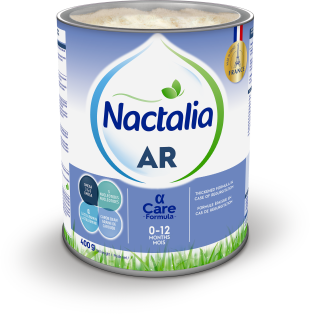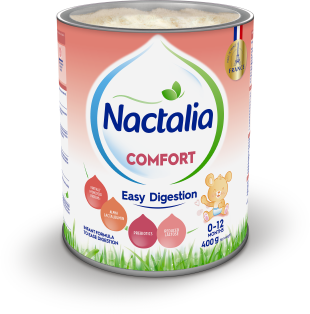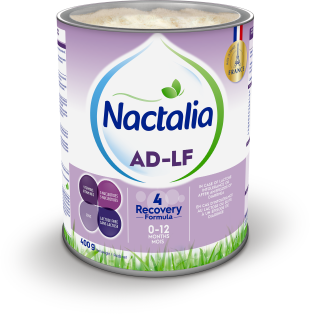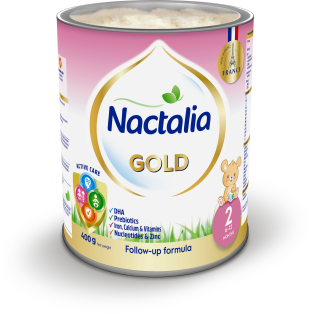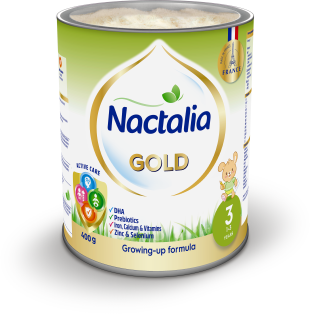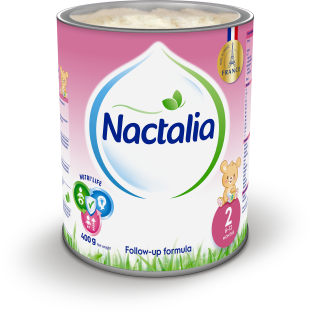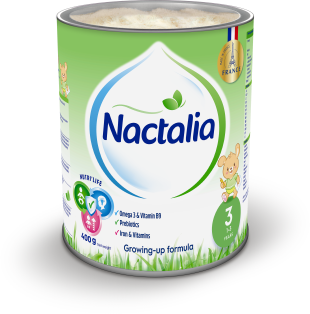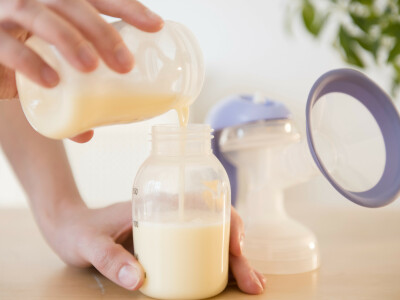
How to prepare and store bottles of infant milk?
Infant milk is available in two different forms. Liquid milk, which is sterilised and ready to use. Powdered milk, which needs to be mixed with water to reconstitute the milk. What equipment should I choose and how to I prepare a bottle? A little tour of the good practices to comply with!
Choosing the right equipment
For environmental health reasons, it is now recommended that we use glass bottles rather than plastic bottles.
At room temperature or reheated?
Even if baby can be given milk that is at room temperature, it is preferable to heat it up slightly in a bottle warmer or under the hot tap so that it is at 37°C for baby, just like breast milk. When baby is fed warm milk, it seems to be more digestible with fewer regurgitations. It is best to avoid using the microwave as this way of reheating can heat the milk up to extreme temperatures very unevenly, thereby causing a burn risk for your baby. What is more, microwaves destroy the probiotics found in some infant milks and modify the vitamins. It is recommended that you shake the bottle well and check the temperature of the milk by pouring a few drops onto the back of your hand or by holding the bottle against your neck before you give it to your baby.
EXPERT ADVICE: what kind of water should be used to prepare bottles?
If the quality of your water permits, you can fill the bottle up with tap water, subject to certain conditions. Your local town hall can tell you if your tap water is suitable. If it is, leave the tap to run for 1 to 2 minutes if you haven’t used the tap for a while, or 3 seconds if you used it recently, before starting to fill the bottle. Only use cold tap water because any water over 25°C may contain mineral salts and germs. The chlorine in the water will quickly evaporate if you put it to one side for a few minutes. Water should not be filtered or softened to avoid encouraging germs from multiplying and the tap should be kept in good condition (cleaning, descaling). The presence of medicinal product residues in water is currently an issue because these residues are not taken into account in drinking water standards.
If you are uncertain about the quality of your drinking water (particularly in cases of pipework containing lead), it is advisable to prepare your baby’s bottles with still bottled water, having first checked that it is labelled as being “Suitable for use in preparing infant food”, and ensuring that you don’t use a bottle that has been open for more than 24 hours.
The water that you choose should have a low mineral content, a dry residue at 180° below 500 mg/l (this information is provided on the label).
In the absence of drinking water or bottled water, cooled boiled water may also be used.
Note that in contrast to mineral water, spring water composition can vary over time, or come from several different springs, each with water of a different composition.
The key stages for a well-prepared bottle
- Wash your hands carefully using soap and water and then lay out the equipment on a clean worktop, ensuring that the bottle and teat are clean. These hygiene rules help prevent transferring germs to your baby.
- Fill the bottle up to the required mark.
- Only use the measuring scoop provided in the box of milk, ensuring that the powder is not heaped or pressed down into the measuring scoop as this will distort the quantities. Scoop up a measure of the powder from the box and simply even off the surplus powder using the tool provided in the box, or with a clean (to avoid contamination) knife to ensure that you have the correct dose and then add it to the bottle. Do not use your finger as the bacteria present on your hands may contaminate the milk. Count one even measuring scoop of milk powder for 30ml of water (the total volume obtained will be more than that of the water by itself). Always ensure that you measure out in 30ml doses and never in half-scoops as the quantities would be incorrect.
- After having closed the bottle, mix the water and milk powder by shaking the bottle energetically to prevent lumps from forming which could then block the teat.
- The bottle can be given at room temperature, but it is preferable to warm it slightly to around 37°C, which is temperature of breast milk.
- Quickly clean the bottle and teat as soon as the feed is over, with a bottle brush or in the dishwasher. The bottle and teat should not be dried with a tea towel, but should be left to air dry.

EXPERT OPINION: how much milk should you give your baby?
On your box of milk you will find instructions indicating the volume of water and number of measuring scoops to give your baby depending on their age. After the very first days, non-breastfed babies should be given an average of between 6 and 8 90 ml bottles over 24 hours, and towards 2 months, they should be offered about 5 bottles of 150ml over 24 hours.
It is important to note that these quantities are only averages that need to be adapted to reflect your baby’s appetite and how quickly they gain weight.
Never force your baby to finish their bottle if they don’t seem to want to: just like you, there are times when they will be hungrier than others. It is may be that they leave half of their bottle at one meal and then want more milk at the next meal: let them eat in accordance with their requirements! Similarly, the times that they want eat and the intervals between bottles can also vary: it is important to respect the baby’s rhythm.
Storing milk
Doses of powdered milk can be prepared in advice, but a bottle should never be prepared in advance: if you are planning on going out, take the required quantities of water and powdered milk separately and mix them just before the feed.
If your baby doesn’t finish their bottle, discard the remaining milk: a prepared bottle does not keep for more than an hour. The box of milk can be kept for about 1 month after opening, provided that is firmly sealed and stored in a cool, dry place.
How to clean a bottle
The bottle should be cleaned as quickly as possible after the milk has been consumed. Rinse the bottle and accessories in cold water. Then, using a long brush (swab or bottle brush), wash the bottle with hot water and little washing-up liquid. Do the same with the teat and the screw top(s). Rinse thoroughly and leave the various parts of the bottle to air dry, never use a tea towel. Put away in a clean place.
The swab must be washed and rinsed after each use.
The bottle can also be washed in the dishwasher, provided that it is rinsed beforehand. In this case, wash all the accessories (apart from rubber teats) on a full cycle at a temperature of at least 65°C that includes drying.
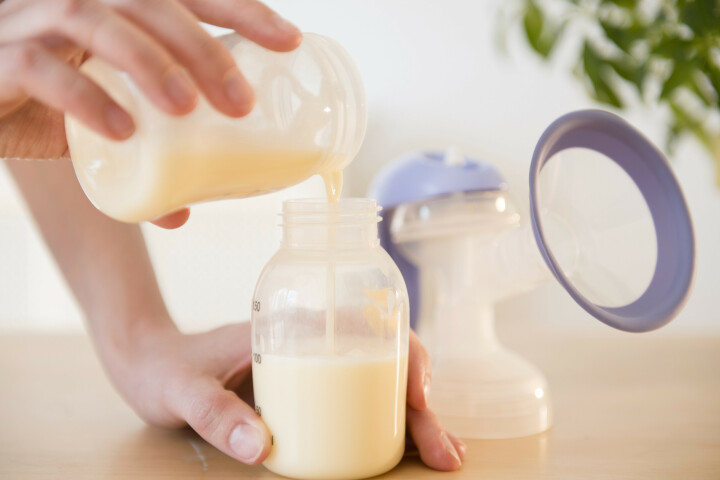
Expert opinion: should bottles be sterilised?
If all the equipment is cleaned thoroughly, sterilisation is not a necessity, but can be done during the first months.
There are various techniques used to sterilise bottles depending on what equipment you have available:
- specific electrical steriliser,
- microwave,
- in boiling water.
Sterilisation should always preceded by thorough washing.
There is no need to sterilise if you clean bottles in a dishwater with a programme > 65°
